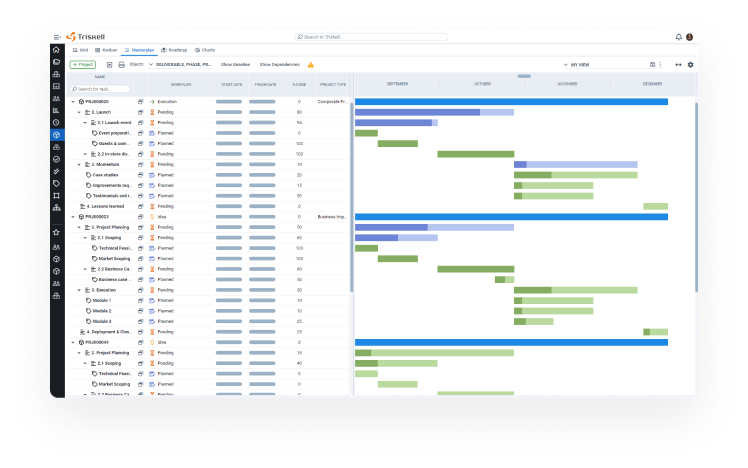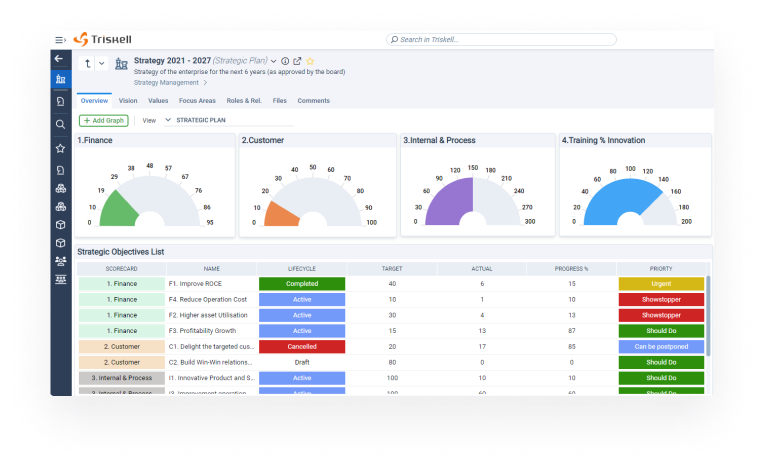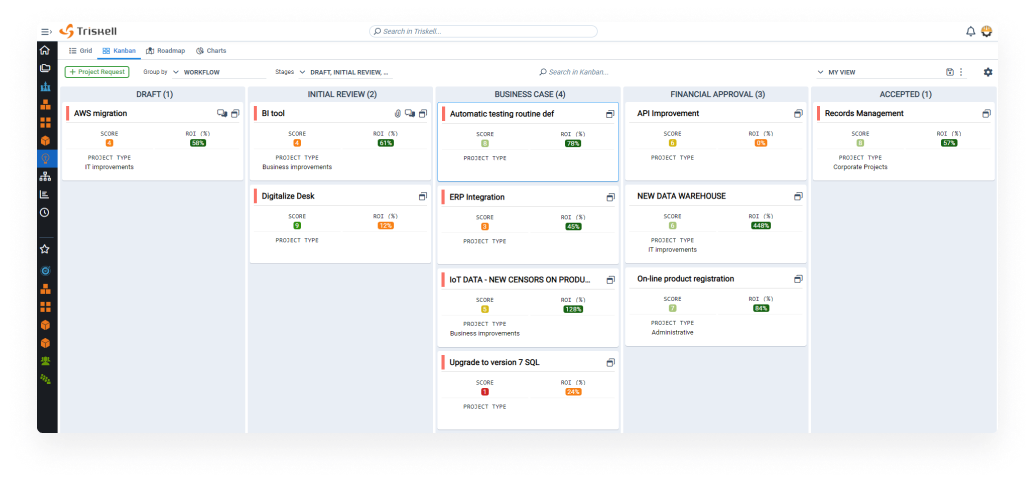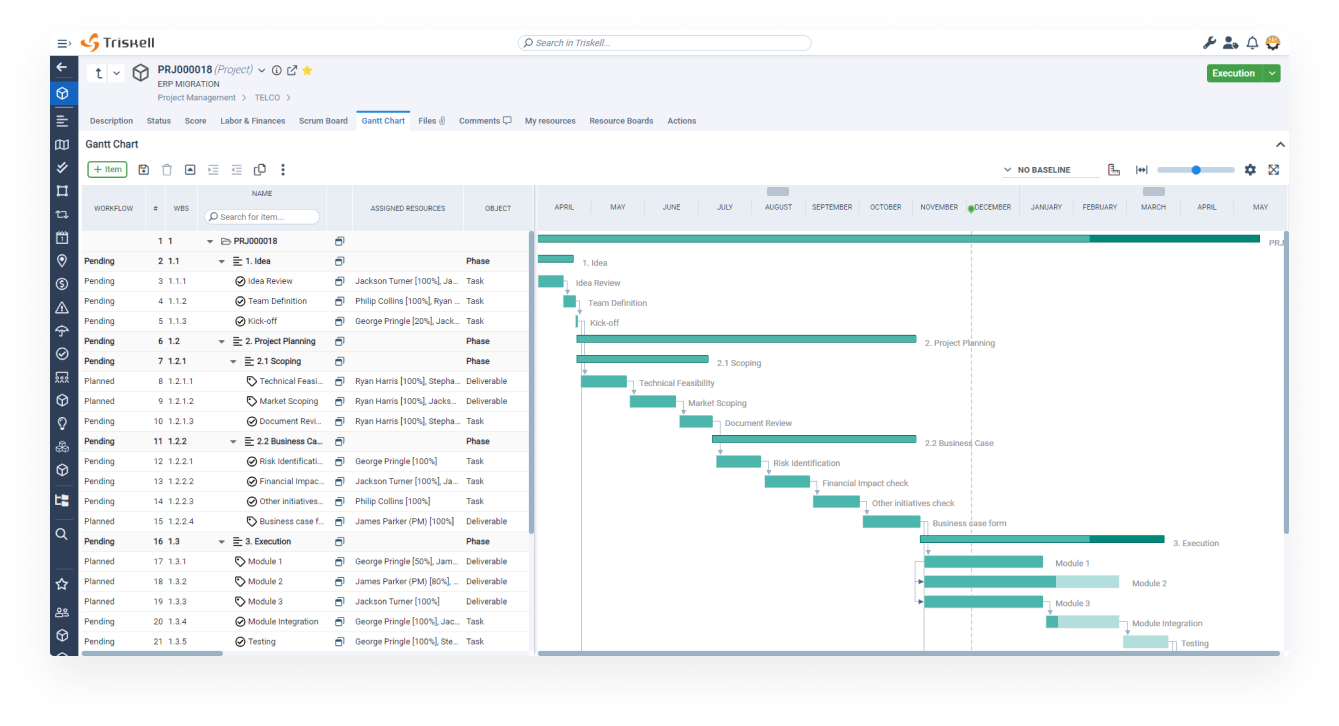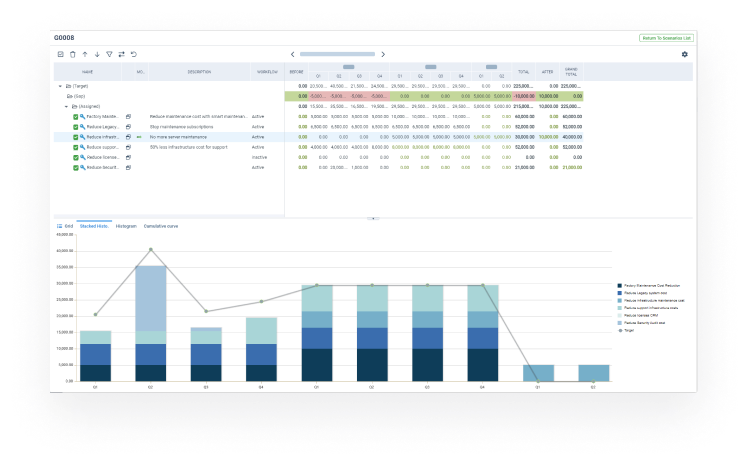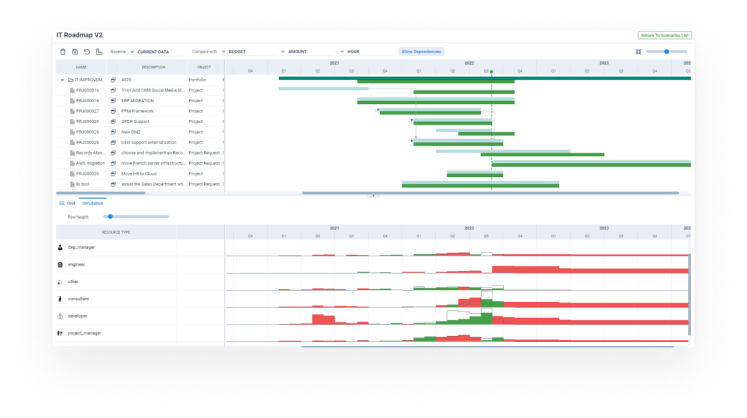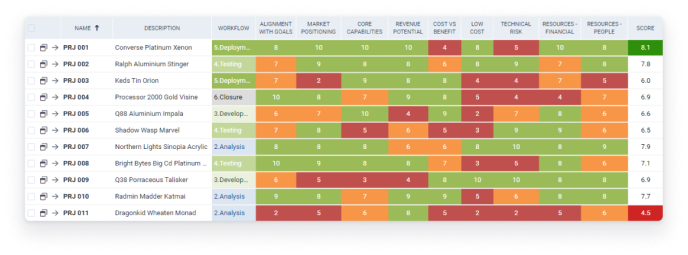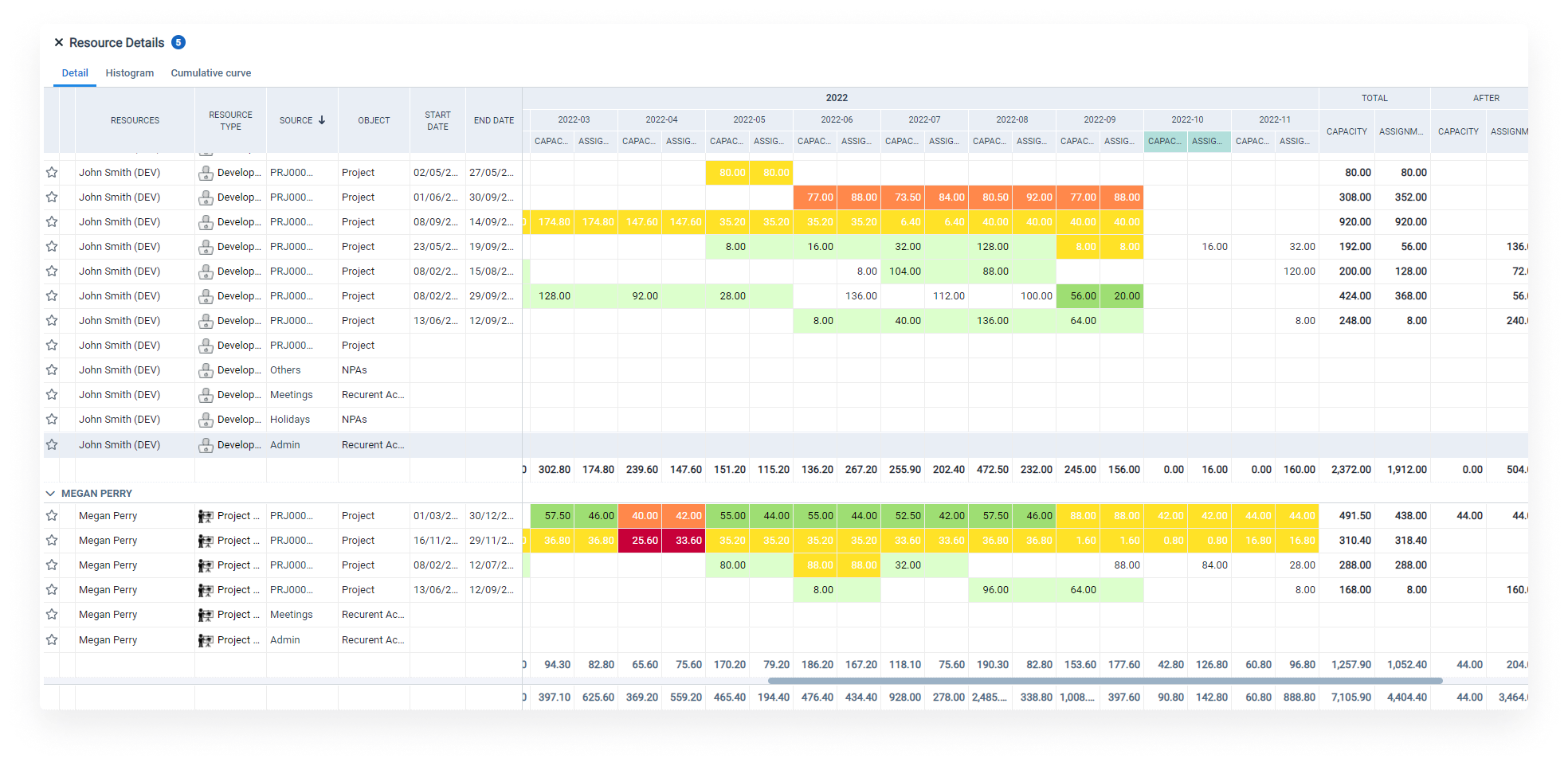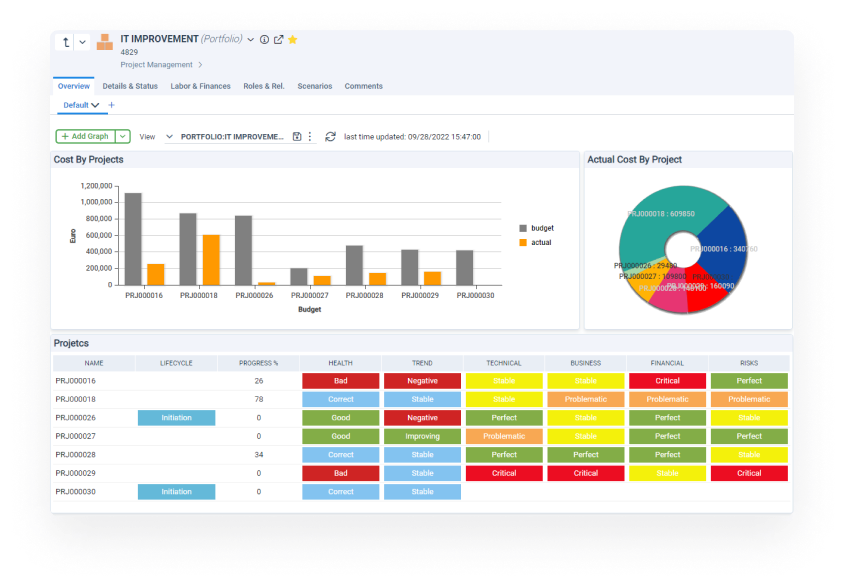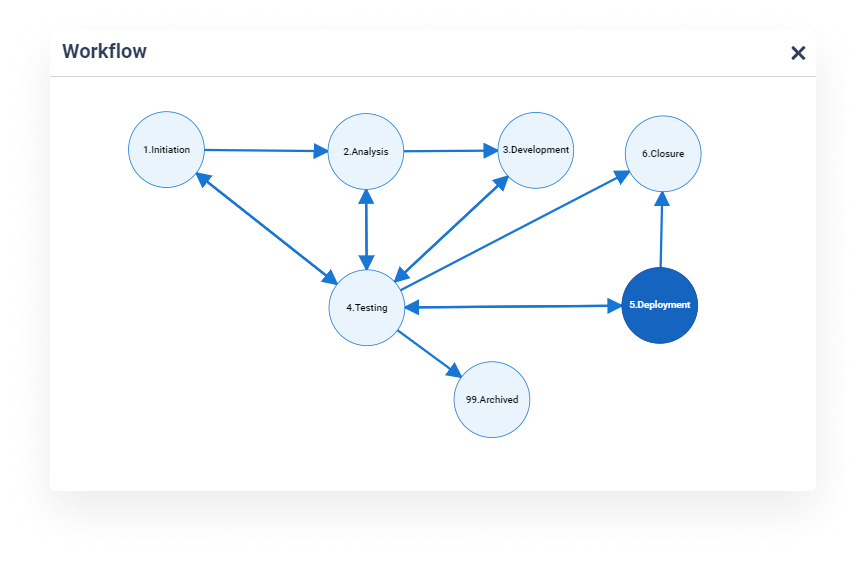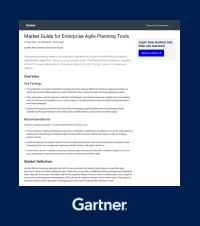Project Portfolio Management (PPM) software: the ultimate guide

Navigating the complexities of modern project management requires more than efficiency: it demands strategic precision. In an era of constantly evolving projects, project portfolio management (PPM) software is emerging as a powerful ally that provides the tools you need to streamline projects, allocate resources effectively and align efforts with overall business objectives.
As we delve into the contents of this comprehensive guide, we will explore what PPM software is and how it can revolutionize the way organizations approach project management.
What is PPM software? Definition and value proposition
In today’s dynamic business landscape, Project Portfolio Management tools emerge as a strategic driver to help organizations orchestrate and optimize their entire project ecosystem. So, what is PPM software?
Broadly speaking, PPM software is a solution designed to streamline the management of a company’s project and product portfolios. Unlike traditional project management tools, PPM software offers a holistic view of project portfolios as a whole.
The value proposition of this type of tool lies in its ability to transcend the silos of individual projects and focuses on aligning organizations’ portfolios with their objectives. It facilitates strategic decision making by ensuring that each project contributes to the overall success of the business.
Key differences between PPM software and Project Management tools
Understanding the unique value proposition of a PPM software is essential for organizations when embarking on the purchase of such solutions. This is because more and more Project Management solutions are trying to cover markets such as ‘Strategic Portfolio Management‘ or ‘Work Management and Collaboration’, so in many cases, the functionalities of both overlap.
Although both types of solutions play a fundamental role in ensuring the success of projects, they have very different purposes within the organizational framework.
Scope
- A project management software is primarily designed for the execution of project tasks. It is the ideal solution for monitoring individual projects, managing project deadlines and ensuring that tasks are completed within established parameters.
- PPM software, on the other hand, goes beyond the management of individual projects and focuses on the holistic management of project (and product) portfolios. These are solutions that enable companies to successfully manage their portfolios and align projects with their overall business objectives.
See the Triskell platform in action in a personal demo
Objective
- Project management tools generally address the day-to-day operations and tasks associated with projects.
- In contrast, PPM solutions take a strategic approach. They facilitate top-level decision making by providing information on how each project contributes to the overall success of the organization. In addition, they enable stakeholders to make informed decisions about resource allocation, risk mitigation and alignment with business objectives.
Resource Management
- Project management tools are ideal for resource management when dealing with individual projects.
- PPM software, on the other hand, takes resource management to another level. They provide a complete view of resource availability and demand across all project portfolios. This enables organizations to allocate them strategically, avoiding bottlenecks and ensuring optimal resource utilization.
Reporting and visibility
- PPM tools provide a clear and detailed view of the entire landscape of an organization’s projects, programs and portfolios. This level of visibility enables executives to make informed decisions, monitor progress, and ensure that each project aligns with the organization’s strategic objectives.
- On the other hand, project management software, while providing good visibility at the project level, lacks the level of detail needed to understand in detail the status of project portfolios.
Risk Management
- Project Management solutions focus on mitigating risks within the boundaries of individual projects.
- In contrast, PPM software takes a more holistic approach, assessing and managing the risks of project portfolios as a whole. This level of visibility allows organizations to proactively address potential problems, thus minimizing their impact on the business.
Benefits of PPM solutions for medium and large organizations
Looking at these 5 differences, the conclusion is that there are a number of benefits of PPM software that Project Management tools cannot provide. PPM solutions are not just a tool, they are a strategic asset that can propel medium and large companies to new heights of efficiency, collaboration and success.
We now look at those specific benefits of PPM tools that make them essential for organizations operating on a large scale:
- Strategic alignment: As we have already mentioned, one of the main advantages of PPM software is its ability to align initiatives with overall strategic objectives. And thus ensure that each project makes a decisive contribution to the success of the organization.
- Resource optimization: Resource management can be a real headache for medium-sized and large companies. With a PPM platform, you can optimize the allocation and use of resources across multiple projects. It will help you identify resource gaps, allocate staff efficiently and avoid bottlenecks, thus maximizing productivity.
- Risk mitigation at portfolio level: As project portfolios grow in volume, so do the risks that need to be mitigated. PPM software will enable you to take a holistic approach to risk management, allowing stakeholders to assess and mitigate risks at the portfolio level, thus minimizing their impact on the organization’s overall objectives.
- Informed decision-making: With a PPM solution, informed decisions become the cornerstone of success. They are tools that have robust real-time reporting and analysis capabilities, providing executives and stakeholders with real-time data on project progress, resource utilization and the status of the organization’s projects, programs and portfolios.
- Scalability and adaptability: Scalability and adaptability: large organizations are dynamic entities. And PPM software evolves at the same pace as the business does. Whether you manage a growing number of projects or are in an environment where changes in project scope or strategic objectives are frequent, PPM software ensures seamless scalability without compromising efficiency.
- Enhanced collaboration: As organizations grow, collaboration becomes increasingly complex. PPM tools themselves foster collaboration by providing a centralized platform for communication, document sharing and real-time updates. This will help you eliminate silos and get everyone on the same page.
- Increased project success rate: Finally, the sum of all of the above benefits will help increase the likelihood of project success. By aligning initiatives with strategic objectives, optimizing risks, mitigating risks, fostering collaboration, and facilitating informed decision making, PPM software becomes a key element in meeting and exceeding organizational objectives.
How does Project Portfolio Management software work?
Project Portfolio Management has many layers. It is a very complicated task that can be greatly simplified with a PPM solution. Listing tasks, allocating resources, defining strategic objectives, identifying and evaluating risks… Here, we will show you how to use a PPM tool like the one from Triskell Software.
1. Centralized project repository
The project portfolio management process in PPM software begins by recording all of the organization’s project demands in the system. This includes the project timelines, the budget allocated to each project, and the KPIs and metrics associated with each initiative.
A PPM software has to be the official source of information for PMOs, Portfolio Managers, Project Managers and any stakeholder associated with the planning, management and monitoring of the projects in your organization. The more thoroughly you perform this step, the better and more detailed the information on your project portfolios will be.
See the Triskell platform in action in a personal demo
2. Strategic planning and alignment
Next, you must link all your initiatives to the strategic objectives of the business. Thanks to Triskell’s scalability and flexibility, you will be able to associate objectives to any object, be it projects, programs or portfolios.
At a glance, you can assess the strategic importance of each project, and prioritize those that contribute most decisively to the success of the business.
3. Establish dependencies and a strategy roadmap
In parallel to the previous step, you should group the different projects into programs, and clearly differentiate the programs into different project portfolios.
Gantt charts and Triskell Masterplans will help stakeholders visualize the dependencies between projects, programs, portfolios and strategic objectives. This will result in better decision making and proactive risk management.
4. Resource management and optimization
Once you have an overview of the projects, the objectives associated with each one and the organization’s roadmap, it is time to allocate resources to each initiative.
Triskell gives you a bird’s eye view of availability, competencies and resource demands across all projects, so you will avoid bottlenecks and maximize the organization’s productivity.
5. Risk identification and mitigation
Risks and unforeseen events can derail any strategic planning if they are not proactively assessed in advance. Triskell has advanced risk management tools that will allow you to not only identify and assess those risks, but also develop strategies to mitigate them and minimize their impact.
Scenario Simulations are one of the functionalities with which you will be able to develop risk mitigation strategies with Triskell. Depending on the different scenarios you propose to the tool, it will show you alternatives and solutions to mitigate those risks in issues such as:
- Prioritization of initiatives.
- Resource reallocation.
- Budget allocation.
6. Real-time monitoring
With PPM software, nothing will be out of control. You will be able to monitor in real time the progress of projects, the budget spent and, in general, the performance of each of your organization’s project portfolios.
Triskell Software dashboards are fully customizable. So, depending on the stakeholder who will consult them, you can customize them to show only the information that really interests them.
7. Reporting
Dashboards are not the only tool to inform stakeholders about the status of projects. With Triskell, you can also configure reports tailored to the needs of each role in the organization.
Not only that, you will also be able to set up alerts and configurations based on multiple parameters, thus informing in real time all the parties involved in the execution of your organization’s strategy.
8. Collaboration and communication
In addition to reports and dashboards, a PPM software includes other features that enable collaboration with different teams and stakeholders in your organization. Shared documents, comments and discussion forums are just some of the tools that Triskell brings with it to foster synergies and productivity of your teams.
Essential features of PPM software
After explaining how PPM software works in general, you should know that, in order to get the most out of it, there are a number of features that must be included in the solution. It is important to point this out because not all PPM solution providers include them or work on them sufficiently.
On the other hand, it is true that, depending on the needs and objectives of your organization, there are functions of the tool that you will use more than others. But, in general terms, these are the functionalities that must be included for your Project Portfolio Management processes to be efficient.
1. What if Scenario analysis
What-if scenario simulation is a critical functionality for decision makers in your organization. By exploring various project portfolio management scenarios, you will gain an analytical advantage and identify challenges and opportunities in advance.
In short, this feature will allow you to make informed decisions based on an exhaustive analysis of all the data in your project portfolios (resources, budgets, risks, demand volume, etc.).
2. Balanced scorecards
Balanced Scorecards will provide you with an analytical framework to evaluate the success and performance of project portfolios against your established key performance indicators.
With this functionality you will no longer see project and program management as a mere list of tasks, but it will help you to adopt a systemic analytical approach to evaluate project performance.
3. Strategic planning tools
Having strategic planning capabilities in Project Portfolio Management software gives organizations the power to define, align and prioritize projects.
PPM software with strategy planning capabilities will give you an analytical approach that goes beyond mere project management and monitoring, ensuring that each initiative aligns with the overall objectives and OKRs of the business.
4. Capacity planning
Efficient resource management should not be limited only to the allocation of personnel to the organization’s projects. Real-time information on availability and demand is essential to ensure that teams operate at maximum efficiency without creating bottlenecks.
Capacity planning will provide an analytical approach to your resource management. It will help you ensure that the right resources are allocated to the right projects at the right time, thus minimizing lead times and maximizing productivity.
5. Financial Management
A PPM software with Financial Management capabilities will take all your planning and budget management processes to a new level, as you will be able to analyze the financial performance of the business’ project and product portfolios.
Decision-makers will gain analytical insight into project expenditures, ensuring transparency, accountability and informed financial decisions.
6. Hybrid Portfolio Management
Your organization probably has teams that work with Agile methodologies and others that continue to work with Waterfall. Therefore, your PPM software must respond to this reality and allow you to apply the most appropriate management approach for each project.
Flexibility is the key to meeting the diverse needs of projects. A PPM software with Hybrid Portfolio Management capabilities is able to seamlessly combine agile and traditional methodologies. You will be able to manage each initiative with the approach that best suits it.
7. Demand Management
Efficient Demand Management incorporates a strategic analytical layer in project selection, prioritization and initiation.
PPM software with Demand Management capabilities will give you a balanced and prioritized approach to project execution. And it will facilitate your decision making on issues such as resource allocation or alignment with the overall business strategy.
Roles Benefiting from PPM Tools
Having analyzed the intricacies of project portfolio management as a crucial foundation for project management success, let’s explore the roles that can derive the most benefit from this solution.
- PMO Managers: For a Project Management Office, it is like having a project control tower. This centralized platform with all project data in real time will facilitate decision making for PMO managers and help ensure that initiatives are always aligned with the organization’s objectives.
- Project, Program and Portfolio Managers: With PPM software, project planning and tracking will be more efficient than ever. Risk management will be much more proactive, decision making more informed and project success rates will increase dramatically.
- Executives and decision-makers: senior management will gain a high-level view of project portfolios, facilitating strategic decision making. Whether it’s aligning projects with business objectives or planning the medium- and long-term future of the business, they will have all the information at their fingertips.
- Resource Managers: Resource managers will be able to put an end to bottlenecks and resource conflicts. You will be able to see who is available, who is qualified for the job and make sure the right people are always where they are needed.
- Financial controllers: CFOs will be able to comprehensively track budgets, expenditures and financial results of the business’ project portfolios. This transparency in financial data will help them with decision making and fiscal responsibility.
- Strategy Managers: Strategy managers will be able to plan and visualize the company’s medium- and long-term roadmap. They will be able to see how projects align with strategic objectives and how each initiative contributes to long-term success.
- IT Managers: For IT managers, PPM tools streamline the management of IT projects and portfolios. They offer centralized dashboards, resource optimization and collaboration capabilities that ensure efficient execution of IT projects in line with the organization’s strategy.
Best practices for successful PPM implementation
Now that you know the main roles that a PPM software can benefit from, we will finish this guide by explaining above the best practices that organizations should follow to successfully implement such a tool.
Its implementation requires a strategic approach and putting into practice 5 tips to ensure the integration of the tool into your organizational framework.
1. Clearly define the objectives
For a successful PPM implementation, it is necessary to have a clear vision of the objectives to be achieved. Whether it is improving project visibility, streamlining resource allocation, or aligning initiatives with strategic objectives, these goals must be precisely defined to make the implementation process as smooth as possible.
2. Involve stakeholders from the beginning
The earlier you involve stakeholders in the PPM software implementation and deployment process, the better. Whether they are executives, project managers, IT managers, end users of the tool …., they should all contribute their views to ensure that the software is perfectly adapted to the needs of the organization.
Involving them in the process will also increase the level of acceptance of the PPM solution throughout the organization and lay the groundwork for a collaborative implementation process.
3. Invest in training programs
In order to take advantage of the potential of the PPM platform from the very beginning, it is highly recommended to carry out training programs for users of all levels. This will ensure that:
- Teams are equipped with the necessary skills to use the software efficiently.
- Any resistance to change is mitigated, making the transition to the new tool much smoother.
- Improve the level of acceptance of the software in the organization.
4. Tailor PPM software to your organization’s workflows
Since your organization has unique management and governance processes, it is essential that the PPM software can adapt to them. It is essential to adapt the solution to your organization’s existing daily operations and workflows to improve the user experience, reduce bottlenecks, and facilitate a smoother transition.
5. Phased implementation
Rome was not built in a day. And the implementation of a PPM software does not happen overnight either. It is advisable to divide the implementation into phases for better control and easier troubleshooting. For example, you can start implementing the software to the PMO and project managers of the organization and, depending on the results, expand to other areas and roles of the business.
PPM Software Buyers’ Guide
All you need to know to select the right PPM software for your business.
Conclusion
In the ever-evolving landscape of project management, success depends on more than task accomplishment: it is about strategic orchestration. PPM software acts as a conductor, harmonizing projects, resources and objectives into a symphony of success.
As we conclude this guide, you should remember that PPM software is not just another tool, but a strategic ally for your organization. Organizations equipped with a platform like Triskell Software’s will be prepared to navigate the complexities of managing their project portfolios. The journey to effective and strategic project portfolio management starts here. If you want to learn more, feel free to request a demo below.
Request a demo of Triskell Software
Triskell meets all the requirements for your organization’s PMO to take a step forward in aligning your project portfolio with strategic planning.

Related Content

Why the CIO needs a PMO approach
Unlock business success: discover why the CIO must embrace a PMO approach! to elevate efficiency and boost productivity.

Lean Budgeting for Agile Portfolios: A Comprehensive Guide
Lean Budgeting: the financial revolution for Agile portfolios. Discover how to streamline project financing and optimize value delivery.

Implementing SAFe with a 7-step roadmap
Do you want to scale Agile at the enterprise level and don’t know where to start? We solve your doubts by explaining the steps to implement SAFe.
